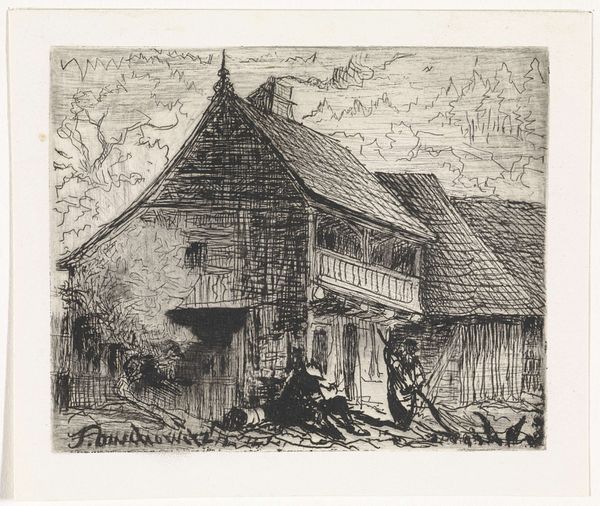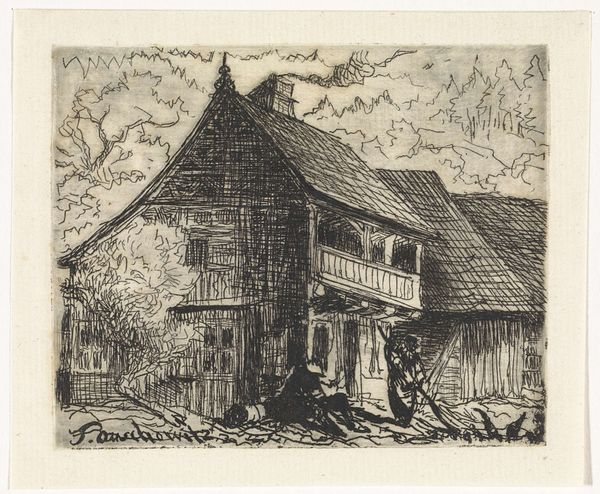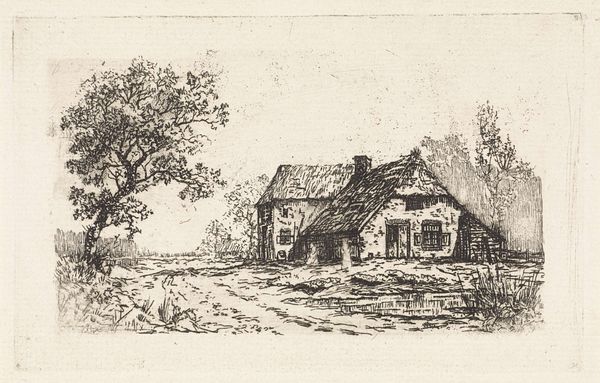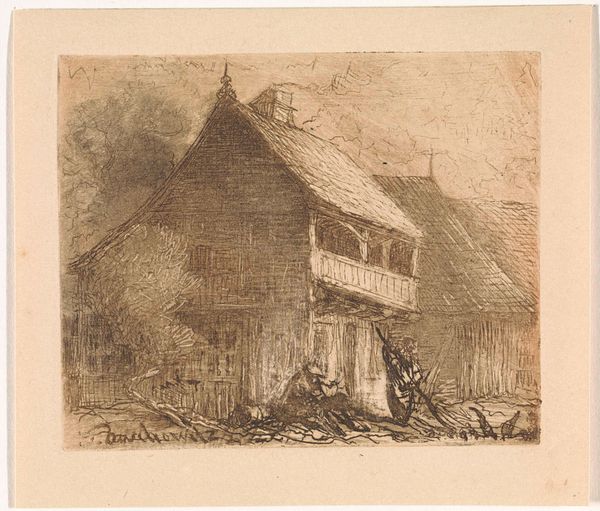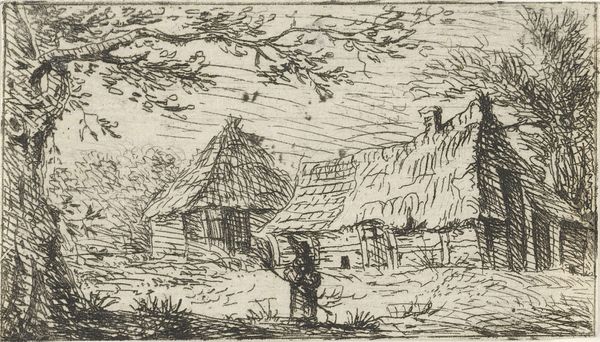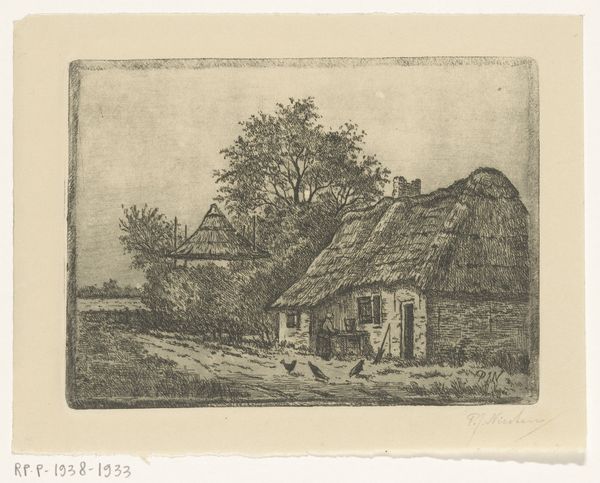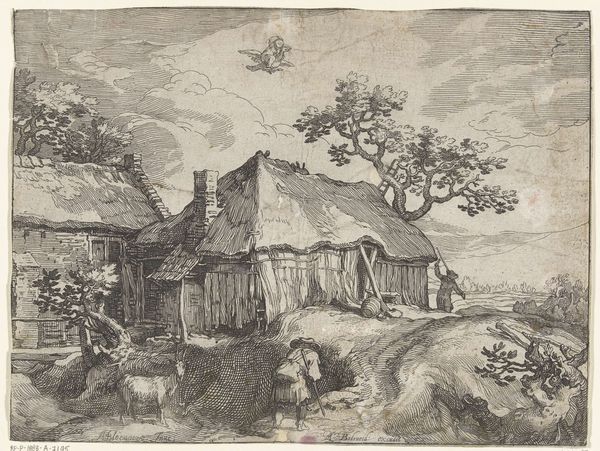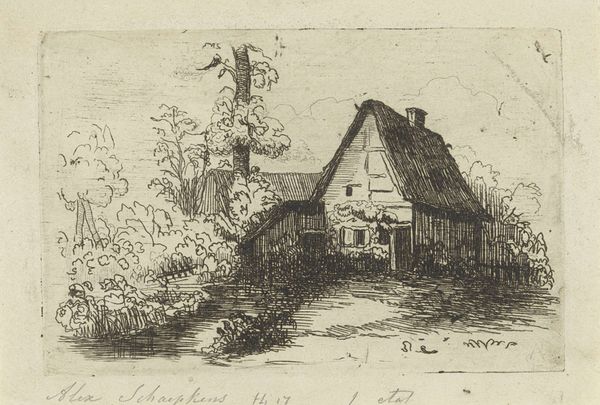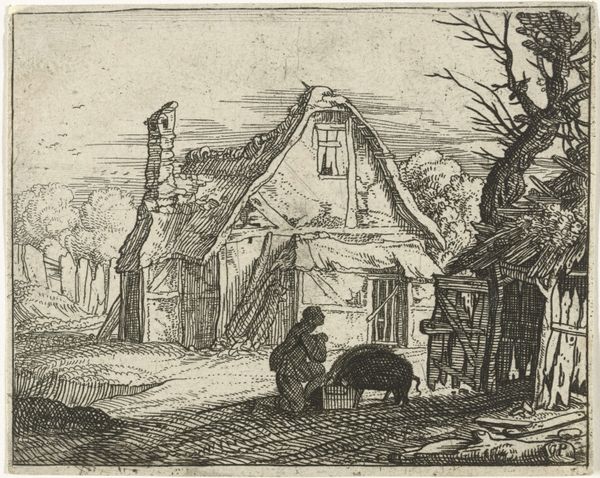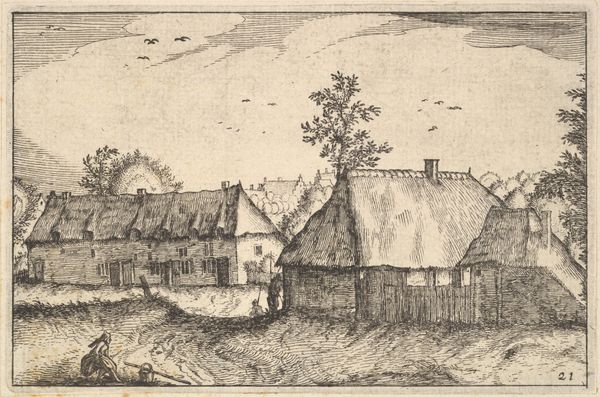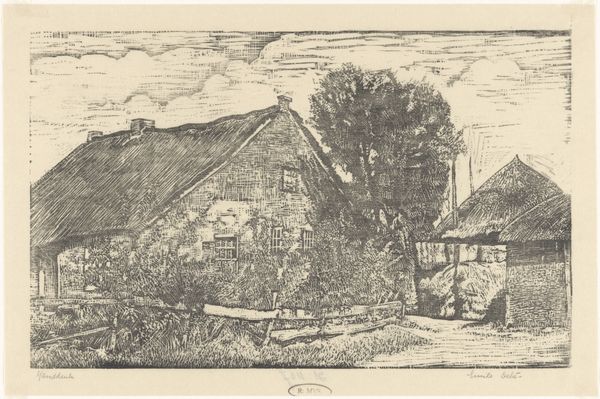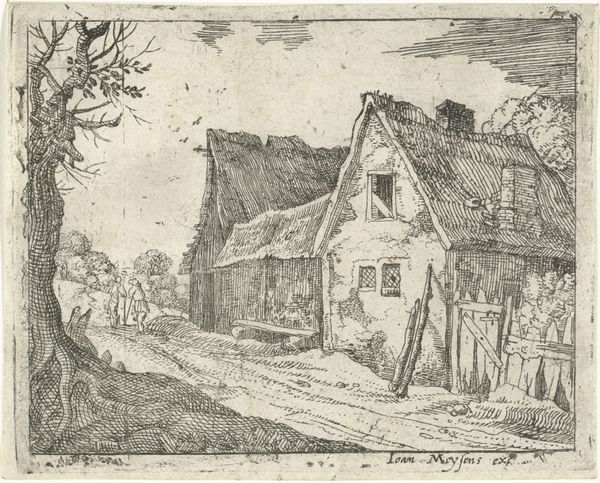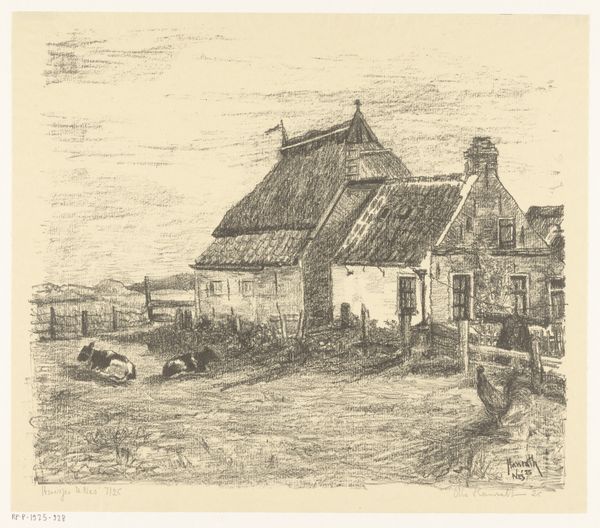
drawing, paper, ink
#
landscape illustration sketch
#
drawing
#
pen drawing
#
mechanical pen drawing
#
pen illustration
#
pen sketch
#
pencil sketch
#
landscape
#
paper
#
personal sketchbook
#
ink
#
romanticism
#
pen-ink sketch
#
pen work
#
sketchbook drawing
#
genre-painting
Dimensions: height 81 mm, width 98 mm
Copyright: Rijks Museum: Open Domain
Editor: We're looking at Johannes Tavenraat’s "Huisje te Auschowitz in Bohemen," which roughly translates to "House in Auschowitz, Bohemia." It was created sometime between 1819 and 1881 using ink on paper. The detail is incredible; the artist really captures a rustic, almost fairytale quality. What strikes you about it from a formal perspective? Curator: The interplay of line is indeed compelling. Note how Tavenraat uses hatching and cross-hatching to establish tonal variation and model form, primarily focusing on the thatched roof and weathered wooden facade of the building. The building dominates, its size exaggerated relative to the figures. Does the composition strike you as balanced, unbalanced, or is balance even a relevant concept? Editor: It feels deliberately unbalanced. The heavy, dark mass of the house on the left pulls the eye in that direction. But the figures offer a point of visual interest that leads you towards the right. Do you see any interesting relationships in the use of line that tie the image together? Curator: Precisely. Observe how the vertical lines that describe the timber structure are echoed in the strokes depicting the figures and the surrounding vegetation. This creates a sense of unity through repetition, despite the textural differences between those elements. And did you observe how light shapes this house with the roof creating shadows on the wood beneath? Editor: Yes, that is particularly clear. The way he captures the textures with the varying ink strokes creates a dynamic surface across the entire drawing, especially in rendering the differences between the textures of the wood. Curator: Indeed. That systematic variation is integral to Tavenraat’s representational strategy. It invites close examination, prompting one to consider how line alone can create illusions of depth and texture. Do you feel like you are actually observing, or are you merely receiving what you see as something fixed? Editor: Now, I definitely feel like I'm observing, searching for new relations between these elements that I previously thought separate! Curator: Exactly. This careful consideration of the image's intrinsic elements has given me a newfound appreciation for the intentionality embedded in what may initially appear as a simple sketch. Editor: I concur. Thinking about this image in terms of lines, shapes, and textures gave me new insight!
Comments
No comments
Be the first to comment and join the conversation on the ultimate creative platform.
